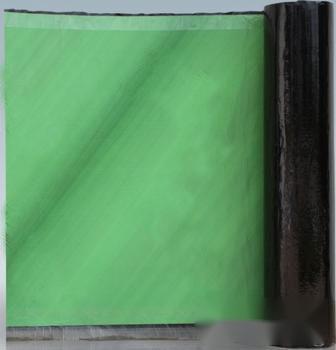1. Product Introduction
SPC self-adhesive cross-laminated waterproof membrane is a high-performance, cold-application self-adhesive composite waterproof membrane made of specially treated cross-laminated high-density polyethylene (HDPE) strong film and high polymer self-adhesive rubber asphalt through a special process. It has excellent dimensional stability, thermal stability, UV resistance, and bidirectional tear resistance.
2. Product Features
1. Strong double-layer overlay film, SPC self-adhesive cross-laminated waterproof membrane has higher tear strength and dimensional stability, and its waterproof performance is superior to ordinary films;
2. The grid structure design effectively solves the problem of wrinkling and bulging after the construction of non-tire-based HDPE polymer sheets;
3. The surface film is treated technically to have UV resistance; even if exposed for a long time after construction, it will not affect the appearance quality of the product, with a duration of about 6 months;
4. Excellent high and low-temperature resistance, able to adapt to climate changes in hot and cold regions. Superior elongation and tensile properties adapt to the deformation of the structural substrate;
5. The self-adhesive layer has excellent self-healing properties and localized self-locking water performance, greatly reducing the probability of leakage;
6. Unique puncture resistance, self-healing, and continuous tear resistance, with excellent water tightness of nail rods;
7. Innovative construction methods can be applied, including dry laying, wet laying, empty laying, and pre-laying reverse adhesion methods, reducing labor intensity and better meeting substrate requirements;
8. Safe and environmentally friendly, the construction of self-adhesive membranes is cold-application, which is friendly to the environment and eliminates safety hazards at the construction site;
3. Application Scope
Waterproofing for projects such as basements, subways, tunnels, swimming pools, roofs, green roofing on underground parking garage tops, rooftop gardens, etc.
4. Transportation and Storage
1. The membranes should be stored in a dry and ventilated environment, preventing exposure to sunlight and rain, and avoiding moisture;
2. Different types and specifications of membranes should be stored separately and laid flat, with a stacking height not exceeding 5 layers;
3. Membranes should be transported flat, without tilting or horizontal compression;
4. Under normal conditions, the shelf life is one year from the date of production.













